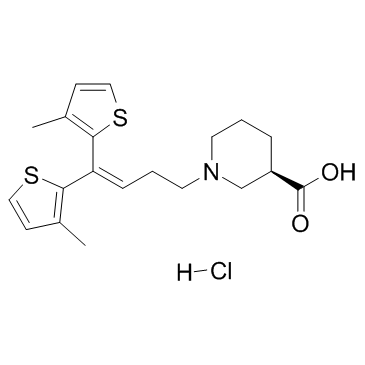| 结构式 | 名称/CAS号 | 全部文献 |
|---|---|---|
 |
盐酸噻加宾
CAS:145821-59-6 |
|
 |
非氨酯
CAS:25451-15-4 |
| 结构式 | 名称/CAS号 | 全部文献 |
|---|---|---|
 |
盐酸噻加宾
CAS:145821-59-6 |
|
 |
非氨酯
CAS:25451-15-4 |